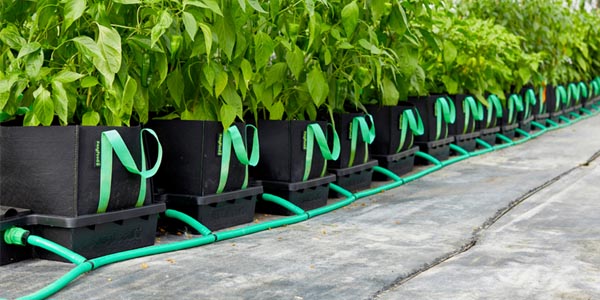
What is hydroponics and how does it work?
What is hydroponics?
Any plant needs sunlight, water and nutrients to grow. But even in special conditions and controlled climate, the plant can be grown only in water, sand, or pebbles. Hydroponics is a technique in which a plant or any type of crop is grown only in water, sand, or pebbles even in a controlled climate. Hydroponics is a method that uses a solution for growing plants instead of using soil. There are many ways to use this technique and it is very useful.
Also Read This : Indoor Plants that Grow in Water and Easy to Manage
Hydroponics is a type of hydroculture in which plants are cultivated without soil using a water solvent containing minerals and fertilizer solutions. Terrestrial plants can be grown with only their roots, roots exposed to a nutrient liquid, or roots physically supported by media such as gravel.
The nutrients used in hydroponic systems can come from many different sources, including fish excrement, duck manure, purchased chemical fertilizers, or artificial nutrients. Plants commonly grown hydroponically, on inert media, include model plants such as tomatoes, peppers, cucumbers, strawberries, lettuce, and hemp.
Also Read This : Everything You Need To Know About Successful Companion Gardening
Types of Hydroponic Systems?
There are Manny of hydroponic methods, we tell you about some hydroponic methods
1) Aeroponics
It uses a system where plant roots are contained in a chamber that is sprayed continuously or intermittently with a fine mist of nutrient-rich water. The roots of the plant are suspended in the air and the advantage of this system is that the roots have good access to oxygen. The system was invented by Richard Spooner in 1983 and has become a successful method of growing a wide range of crops including seed potato production, tomato production, leaf crops and small lettuces.

Also Read This : Do Seeds Need Darkness to Germinate
2) Gravity fed system
This system does not use electricity to circulate the nutrient-rich water. The system consists of a container larger than the plants and the water moves through and down the plants in a controlled manner. This system is used with plants that are grown in pots and the water is channeled to the base of the pot and capillary action draws the water into the pot.

Also Read This : Seeds That Require Light to Germinate
3) Deep Water Culture Systems
It involves growing plants suspended in water with nutrients. The plants are placed in the net with their roots in the water. The net may or may not contain material to separate the roots. The water pumps air through it to increase the oxygen in the water which helps the roots to grow.

Also Read This : Vegetable Seeds That can be Directly Sown
History of Hydroponics
It is not that this is a technology of today, which was developed only a few years ago. Based on historians and relics, this technique is very old and well used. It was first started in history in the “Babylonian Empire”. At that time this type of technique was also used in hanging gardens. It is still very prevalent in Iraq.
The earliest published work on growing terrestrial plants without soil was Francis Bacon’s 1627 book Silva Silverum or ‘A Natural History’, published a year after his death. After that water enrichment became a popular research technique. In 1699 John Woodward published his water culture experiments with spears.
Also Read This : How to Grow Mogra Flower from Cuttings at Home
They found that plants in less pure water sources grew better than plants in distilled water. By 1842, a list of nine elements believed to be essential for plant growth had been compiled, and the discoveries of German botanists Julius von Sachs and Wilhelm Knopp in the years 1859–1875 resulted in the development of soilless farming techniques.
To quote Julius von Sachs directly: “In the year 1860, I published the results of experiments which demonstrated that land plants are capable of absorbing their nutrients from water solution, without the aid of soil , and it is not only possible in this way for plants to live and grow for a long time, as had long been known, but also to bring about a vigorous increase of their organic matter and even the production of seeds capable of germination.
Also Read This : All you need to know about Vegetable Transplant
The growth of terrestrial plants without soil in a solution of mineral nutrients was later called “solution culture”. It quickly became a standard research and teaching technique and is still widely used. Solution culture is now considered a type of hydroponics where there is an inert medium.
Also Read This : Transplant Vs Direct Sowing
Benefits of Hydroponics
Hydroponic crops can be packaged and sold while they are alive, increasing the length of freshness. Hydroponics is a good way to grow plants for areas without good soil, such as Antarctica, space stations and space colonies. Hydroponics is great for plant teaching and research.
Also Read This : Unripened Bananas : Benefits of Eating Raw Bananas & How to Grow them Indoors
No soil is needed for hydroponics. The crops are not contaminated by the soil. Requires less water than crops grown in soil. Hydroponics costs less than other methods of growing strawberries. Hydroponics gives plants more sunlight. Insects and other pest hazards are minimized with a hydroponic system.
Also Read This : What Plants Can You Grow Organically in Your Own Backyard




